Test Firing the Ultralite Kiln
I am often asked about k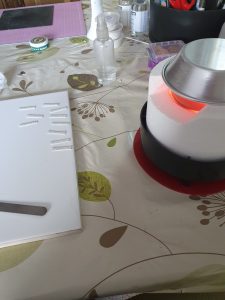 ilns in my line of work. Most of my students, will at one point or another ask me if they should get a kiln and what should they buy if they were to. And for that, I do have another blog talking all about that. It covers the considerations about buying a kiln and whether it’s right for the individual, because sometimes it’s not. I have also been aware of the teeny tiny Ultralite kiln for a while now and I must be honest, I’ve been a bit snooty about it. In fact, I’ve never even floated it to my students as a potential solution to their kiln question.
ilns in my line of work. Most of my students, will at one point or another ask me if they should get a kiln and what should they buy if they were to. And for that, I do have another blog talking all about that. It covers the considerations about buying a kiln and whether it’s right for the individual, because sometimes it’s not. I have also been aware of the teeny tiny Ultralite kiln for a while now and I must be honest, I’ve been a bit snooty about it. In fact, I’ve never even floated it to my students as a potential solution to their kiln question.
However, recently I decided to go and give it a try. You see, the distributor of Art Clay Silver in the UK – Metal Clay Ltd had a Facebook post all about it and they were offering it on sale. As I read it, I noticed a few of my metal clay friends had said they had one and they loved it. Loved it! So, I thought. maybe this kiln is worth a try?
Just as soon as I had the money, I bought the Ultralite and a lot of its accessories and the total came to just over £400. Now in fairness, you don’t need all the accessories at once – I am a tool junkie! Also, to be totally transparent, I haven’t used a number of them yet.
The Ultralite kiln itself without any accessories costs £229 at the moment (it’s still on sale). It comes with a cover, a heat resistant mat and a spatula for transferring pieces onto the firing disc. You will have to buy the firing disk for silver clay as an additional accessory. These cost an additional £12.95 if you want to have a single one or £30.95 for a pack of three. Depending on your choice the kiln plus firing disks will set you back between £241.95 and £259.95.
I waited eagerly for my Ultralite to arrive and when it did I was a bit taken aback! The box was pretty small. I’d spent over 400 quid on something this small!!?
I took everything out and had a look and then followed the scant guidelines about firing it up for the first time. This is an important step because it burns the kiln coating off. You heat it up for 35 mins without its lid and then after that, put the lid on for a further 15 mins. Beware, do this in a well-ventilated area, because it produces quite a lot of fumes and it can stink the place out!
Once it had fired up and then cooled down, I moved it to my workroom and started making some test strips. Nothing fancy, just textured, 3 cards thick strips of fine silver clay. When these had dried, I set about testing the Ultralite. For the first round of tests, I decided to do basic firing/ After having a look at the Ultralite firing instructions online, I wrote a wee test plan to follow. As one of my accessories, I bought a temperature control but decided to test the kiln with and without that, to see if it was necessary.
The Firing Tests on the Ultralite
Test One
Ultralite pre-heated 35 minutes, with lid on (as per manufacturer’s instructions)
Test pieces fired without lid and controller for 35 minutes
Results: After the time was up, the kiln was no longer glowing, and I wondered if the clay had sintered properly. Until I did a bend test, that is. It bent beautifully and I was able to form a curl with one of the test strips and I polished up the other one very easily.
Test Two
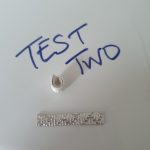 Ultralite per-heated for 35 mins, with lid on.
Ultralite per-heated for 35 mins, with lid on.
Test pieces fired without lid but with a temperature controller on Setting 3 – for 35 minutes.
Results: After firing, the plate was still glowing. Again, one test strip bent very well into a coil and the other polished up well.
Test Three
Ultralite pre-heated for 35 minutes with lid on for 35 minutes. 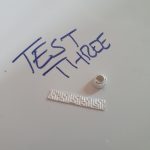
Fired with lid on and NO controller. It’s important that you let the silver clay burnout properly, with the smoke and flame BEFORE replacing the lid.
Results: Again, the results were excellent. One test strip coiled beautifully and the other polished up well. I have to say that I noticed a difference in colour when I took them out – they had a whiter, more silvery sparkle akin to that of pieces that come out of my Paragon SC2 kiln.
Test Four
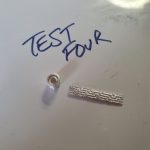 Ultralite pre-heated for 35 minutes with lid on for 35 minutes.
Ultralite pre-heated for 35 minutes with lid on for 35 minutes.
Fired with lid on AND using a temperature controller.
Results: The results were very similar to Test 3 with the pieces having a similar colour. Bent very well and polished easily.
I found that there is very little difference between the tests in terms of how well the silver sintered. I must admit that I was really impressed! I also had to think of other things to fire, so I could test them too!
The rest of the tests were done with the controller, since I had proven, at least to myself that the kiln didn’t fire differently with or without it. I also pre heated the Ultralite by the required 35 mins for each test – so I am leaving that as read and missing it out now, to save me typing it again and again!
Test Five
Fired with the lid on and the hottest setting with the controller for 35 minutes.
Results: The rose fired really well and polished up too. No issues at all
Test Six
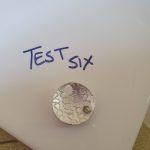 ACS Fine silver domed pendant with fireable stone
ACS Fine silver domed pendant with fireable stone
This time I decided to support the pendant on some kiln pillow because it was curved. I heated up the Ultralite for the pre-requisite time and when it was ready, I placed a small amount of kiln pillow on the fired disk and replaced the lid. I left the lid on for another 5 minutes. I then removed the lid and place the pendant on top of the kiln pillow and waited for the binder to burn out. Once it did, I replaced the lid and fired for 1 hour.
Results: Once more, the firing went very well. The pendant seemed to be sintered although there are no bend tests to check with a bead. There was no distortion and the stone survived. It polished up very well too.
Test Seven
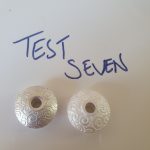 ACS Fine silver bead – bead had a flat bottom and was able to sit directly on the firing disk.
ACS Fine silver bead – bead had a flat bottom and was able to sit directly on the firing disk.
Fired with lid on, setting 3 (hottest) on the temperature controller for 1 hour.
Results: Fired very well, no issues at all and the bead did not slump. Polished up well too.
Test Eight
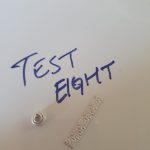 Two test strips with the lid on at the hottest setting for 2 hours.
Two test strips with the lid on at the hottest setting for 2 hours.
Results: I wanted to see if the Ultralite could maintain a steady temperature for the duration of two hours or if the silver would get too hot and melt. I am delighted to report that these strips also fired well. One of them was bent into a curl and the other polished up very well.
Test Nine
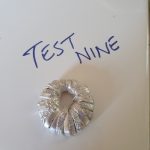 A fine silver pendant made of strips of clay, formed around a wood clay core.
A fine silver pendant made of strips of clay, formed around a wood clay core.
On the controller I have, there are three settings. The first one is specifically for wood clay burnout. So I heated up the Ultralite to this temperature and placed the hollow object on the firing disk. This is best done with all the windows and doors open because as expected it does produce a lot of smoke. I stayed with the Ultralite whilst this was firing, just in case! I left it for about 30 – 40 minutes until I could see that the core had burnt away. Then I cranked up the temperature to full and placed the lid on and fired it for another hour.
Results: The pendant did not distort and all the core had burned away. The silver seemed to be sintered and polished up well when I brushed it.
Conclusion
I was really pleasantly surprised at how well the Ultralite kiln performed and it was clear that although it came with different accessories, these are not at all necessary to get started (apart from the metal clay firing disks). So, you could start out with this little kiln for around £240 and it would take the strain out of handfiring for you. What’s more, if you’re firing fine silver, you can also fire more complex designs like beads and origami shapes too. I think it’s a great starting out kiln. BUT – always do some strip testing of your own before your begin putting your carefully crafted pieces in!
The Ultralite does have its drawbacks though. Read on for more information.
Firing anything other than Fine Silver
When I was doing my research for this kiln, I did come across a Cool Tools video that shows the firing of EZ960. She successfully fired flat shapes but had difficulties firing more 3D objects – which was the reason for my tests on the beads. But the main difference was that I used FINE silver for my experiments,. I have not fired any other type of silver clay on this kiln and because of some of their firing requirements (for example, firing at 900oC), I don’t think this kiln is suitable for that.
Firing with Glass
The other thing it wouldn’t work well with is glass. Because the temperature controller is not precise, it would be very difficult to control the heat enough to avoid melting the glass and have the kiln hot enough to sinter the silver clay.
Other Uses
Besides firing, the Ultralite does have other uses. Apparently, it’s fantastic for enameling and great for keum boo (the Korean art of adding gold foil to silver). I will explore these at a later date but the attraction of having an easier option for enameling is very exciting for me. I like that I can sit beside it and look in to see what’s happening without having to open a kiln door!
I hope this has been a good introduction to the Ultralite kiln. I’m certainly pleased I bought one – being a tool junkie aside😉. I can see its uses and appreciate it for what it is. An excellent beginner kiln with some fantastic extras.
Until next time!
Love Emma x

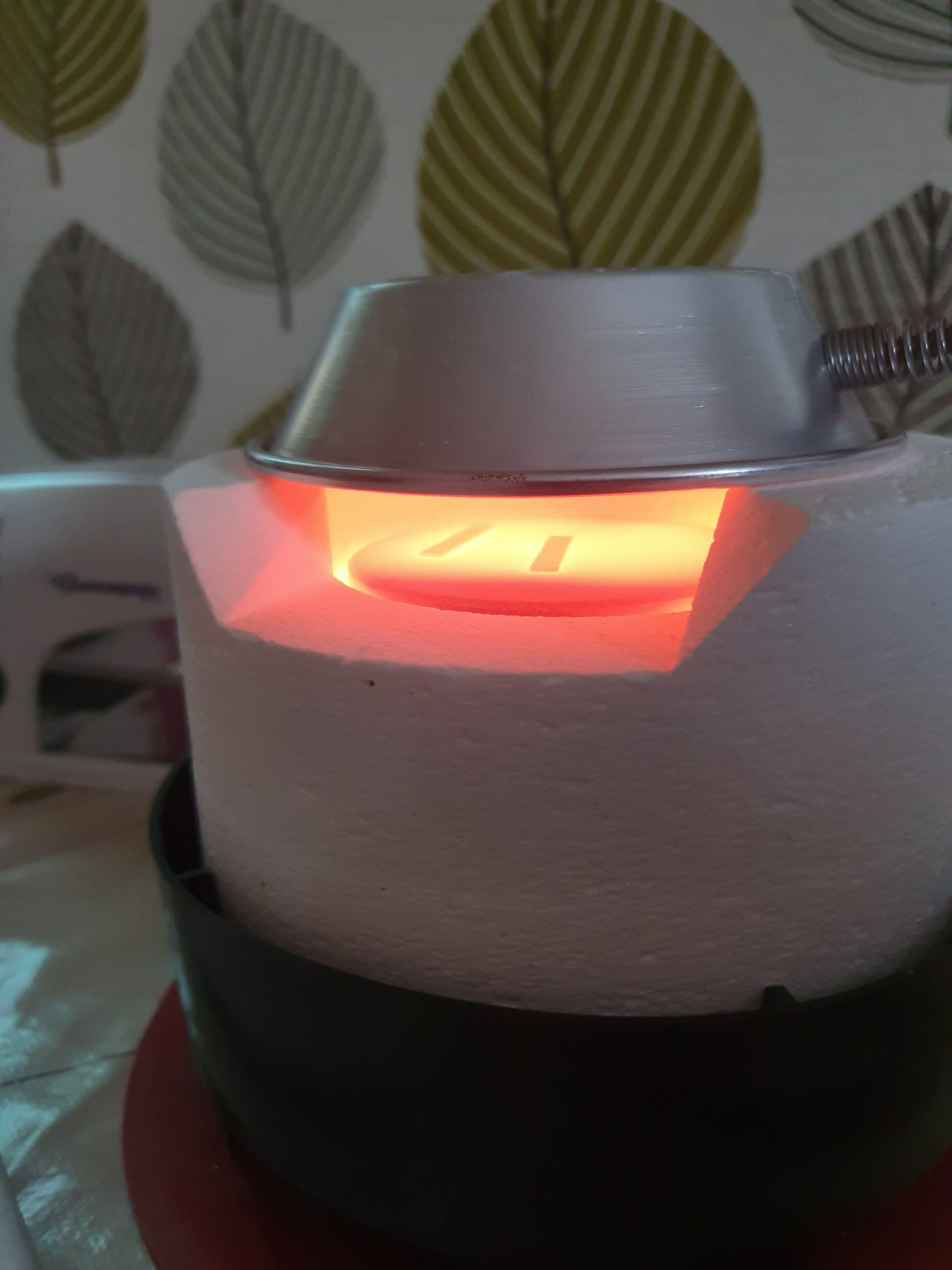
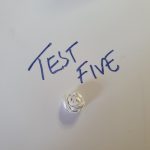

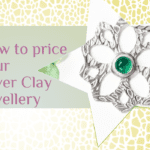



Great review Emma ! Thanks for taking the time to test this kiln for us 😊👍. I’m still working with a torch or my microwave kiln but always looking for new ways to work with PMC and my fused glass .
Thanks again for your generosity in sharing your knowledge.
Thank you Chris! I’m so pleased you found it useful xx
Good morning, thank you so much for this brilliant review. I purchased the Ultralite Studio Kiln a few months ago and LOVE it. I just want to check, the recommendation from Metal Clay is to fire Art Clay Silver with the lid off due to possible melting of the silver, I have therefore always done this. My only worry is with the lid off the temperature goes down to 620⁰c which I am not sure sinters the ACS properly. I don’t have a temperature controller at the moment. My question is when you did Test four, firing with the lid on using the temp controller, did you reduce the temperature of leave it on the maximum? I would like to purchase a temperature controller but I don’t want to use it and melt my silver pieces! Any advice would be gratefully received. Jo
Hi Jo
I didn’t change the temperature setting for the ULtralite with the lid on, I left it at max and tihings fired well. BUT my student did and had a melting issue- so my advice would be to adjust the temperature a little bit before leaving the lid on. The mini kiln does get very hot and if the silver melts on the shelf, then it ruins it.
Hope that helps!
Best wishes
Emma
Hi just got my ultralite and having trouble getting any w ball enamel other than ivory to fuse? I have preheated for 2 hours and keeping the lid on…any ideas please? Ta.
Hello Debs
I’m afraid I am not an enamel expert, so can’t really advise you on this. If you can’t get the Ultralite hot enough to fuse the enamels on this kiln and you sound like you are doing everything you can to make that happen, then the kiln isn’t hot enough for your needs.
Sorry 🙁
Emma x
Hi Emma
I’ve been thinking of getting a kiln for a while, I couldn’t justify getting the little red Prometheus Mini Kiln PRO-1, so I kept looking at the ultralite, then came across your review and tests, these are brilliant, my little kiln arrived two days ago, without the controller.
Having read your tests( test 1) I went ahead with some confidence and did some firing, 2 patten strips of(all ACS 999) with holes for earrings came out wonderfull, 1 pendant full of moulded shells and a 3mm sparkler(no azure) again wonderfull. the last pendant was more flat patten 1 moulded shell and a Nano Gemstone – Turquoise no azure as such, dissappointed in this pendant the stone went an off turquoise colour – don’t forget the azure(hole) on nano gems will try again.
I’m also glad you used some kiln blanket, in a test, I’ve made a cut out lentil (only one half) with lots of cut out flowers attached with 1.5mm cz in each flower, some leaves, and a snake on the back for a bail.
Do you think the kiln blanket will stop the piece from being sintered properly and is that why you fired yours for an hour, I don’t want the pendant melt or bend and buckle.
Have you fired bigger pieces since your tests.
Hi Robyn
I am glad you found the blog useful! And it sounds as though you’ve started well. The kiln blanket won’t stop sintering, if anything the kiln blanket may insulate your piece and make it fire at a slightly higher temperature, so pay attention to it. You can slightly manipulate the heat with a temperature controller and taking the lid on and off.
As far as larger objects – I don’t forsee any issues with firing larger and thicker objects as long as they are of simple construction. However, I have yet to test this kiln with any complex constuction pieces, like a box.
I hope that helps
Emma
Thank you, Emma, for testing the kiln and generously sharing your notes. It was very reassuring as I have been considering purchasing this kiln.
Kind regards Rae
Hi Rae
I am so glad to hear that it’s helped you!I love this little kiln and it is a good piece of equipment.
Good luck!
Emma x